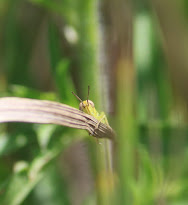One of the wonderful things about living in a city is the easy, free access to parks, trails, and other amenities that make life pleasant for everyone, regardless of wealth or social status. The Sycamore Greenway is available for everyone to walk, run, cycle, watch birds, explore flora, investigate insects. You can swim in pools, work out on treadmills and other equipment, play basketball, all without pricey membership fees. What's not to love?
Enter "the detour".
A city is a collection of thousands of people, each with basic needs and wants that a successful city strives to meet. A growing city needs places for people to live; an aging city needs to update its amenities as they lose their luster (and, for example, tens of thousands of gallons of water daily in the case of one amenity).
 |
In the short term, the trail closure stretched
all the way to the Sycamore Apartments! |
When the orange barricades went up along the trail a few weeks ago, I knew the city's South District plan was beginning to catch up. I'd seen the maps, showing all the agricultural fields filled in with planned neighborhoods, the extension of McCollister Boulevard cutting across the open midpoint of the trail.
I asked, first a passing fluorescent-shirted man with survey equipment on the trail, and later the city, what was happening? How long would our trail be closed? The initial answer was related to a sanitary sewer connection for the new development east of the trail; the closure time estimated at a couple of weeks. Ok. That doesn't sound bad.
 |
"The tubes." The future road will go over them, and water will
be able to flow under the road through these culverts. |
As the weeks passed, and the trees were cut down, and the trio of massive cement tubes laid in the basin alongside Sherman, I inquired again. What's happening with our trail?
The answer.
The city, as always in my experience, was prompt and happy to answer questions. A road was being built to connect the new development to the existing neighborhood around Sherman, and it would cross over the "tubes" (culverts) that had been placed (similar to the crossing at Gable Street). And yes, a sanitary sewer was connecting to the Greenway east of the Birds in Flight intersection. There is also a planned road in the same area which will someday cross the trail but not as part of the current construction.
 |
Looking east toward the new development. The culverts
have been covered, and the road graded. |
Ouch. My initial instinct was less than gracious. There goes our Greenway. Thus begins its degradation, the loss of habitat for the sparrows and crawfish, the mink and the cranes, who have called the area home for decades, for generations of their lives. The inexorable advance of houses, eating the rich farmland, which had eaten the rich prairies.
 |
"There used to be some nice trees there!"
Looking north toward the new development, from the "sanitary sewer"
connection east of the Birds in Flight sculpture.
|
And yet!
How wonderful it is that a whole new neighborhood of people will be able to walk on our trail, will be able to see the birds and visit the flowers each year! That people will have another option to get around town, another connection in our South District that lets people traffic flow where it needs to go. And that the Sycamore Greenway--a stormwater management system--will continue to do its job managing stormwater for the neighborhoods that surround it.
That's the challenge of cities. They must meet the needs of so many different people, with so many different requirements and expectations. Perhaps I like a local park just as it is, with open spaces and prairie plantings. But there could be 50, 100 more people who would love to see it filled with pickleball courts, or a boisterous dog park, or challenging outdoor fitness course. Any change is difficult for people who like the status quo. But change is inevitable, and we count on decision makers to implement change in a positive way.
 |
The planned development, showing the new road crossing the trail at left,
and a future road going south near the center. |
Sparrows don't pay taxes. Mink can't call in to city council meetings and complain about the loss of their homes. The cranes who have lived near the wetlands for decades lack the appropriate paperwork to claim ownership. But human families need places to live, and the South District is a wonderful place to live. The city has planned its growth in the area, and its plans generally keep the Greenway intact, though its character will no doubt change dramatically in coming decades.
We can continue to support our Greenway even as it changes, first and foremost by using it, for transportation and for recreation. We can pick up litter to keep it from flowing into our Greenway. We can lobby decision makers to require greenspace and green connections be included in all future developments so both people and wildlife have a place to go--speak up for the sparrows and the mink! Imagine if you could walk or ride a trail like the Sycamore Greenway, flanked by natural greenspaces its entire length, from one end of town to the other!
























































